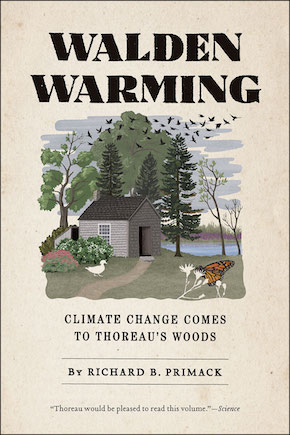Richard B. Primack on Thoreau
In their October 19, 2015 issue, the New Yorker published a piece by staff writer Kathryn Schulz on Henry David Thoreau’s legacy. “Who was this cold-eyed man who saw in loss of life only aesthetic gain, who identified not with the drowned or the bereaved but with the storm?,” one of its takeaway lines, evidences Schulz’s polemical intent: “Pond Scum,” as the piece is titled, resituates Thoreau as a narcissistic control freak churning out our earliest instances of “cabin porn” and doling out misanthropic moral judgments as if they were fodder for page-a-day self-help calendars. One point she does concede, though: Thoreau was “an excellent naturalist and an eloquent and prescient voice for the preservation of wild places.”
Richard B. Primack, author of Walden Warming: Climate Change Comes to Thoreau’s Woods, responded in an op-ed for the Boston Globe, “Sorry, New Yorker, Thoreau is more relevant than ever,” which addressed Thoreau’s contributions to our understanding of species extinctions, the value of education, the dangers of consumer culture, and even, climate change.
As Primack argues:
Everyone knows that Thoreau was an unusually perceptive observer of nature who wrote eloquently and passionately about the need to preserve wild spaces. He also kept a voluminous journal — 2 million words by the time he passed away. But few know about his detailed notes on the emergence of leaves and flowers on hundreds of plant species and the arrival of migratory birds and the departure of ice on Walden Pond. These notes were so overlooked that the editors who first published his journals cut them to save space; they were left as scraps on the editing room floor as it were.
Thoreau recognized their value. He pulled the observations from his journals and created neatly organized tables (well, sort of neat, except for his incredibly bad handwriting) listing the leaves, flowers, birds, and other natural events he saw on each day for eight years between 1851 and 1858. He was creating a nature calendar.
These tables have been invaluable tools for investigating the impact of climate change on New England’s flora and fauna. His observations have been the foundation for a line of work and insights that has involved numerous students and researchers from many universities and countries and is still growing and expanding today.
To read more about Walden Warming, click here.
